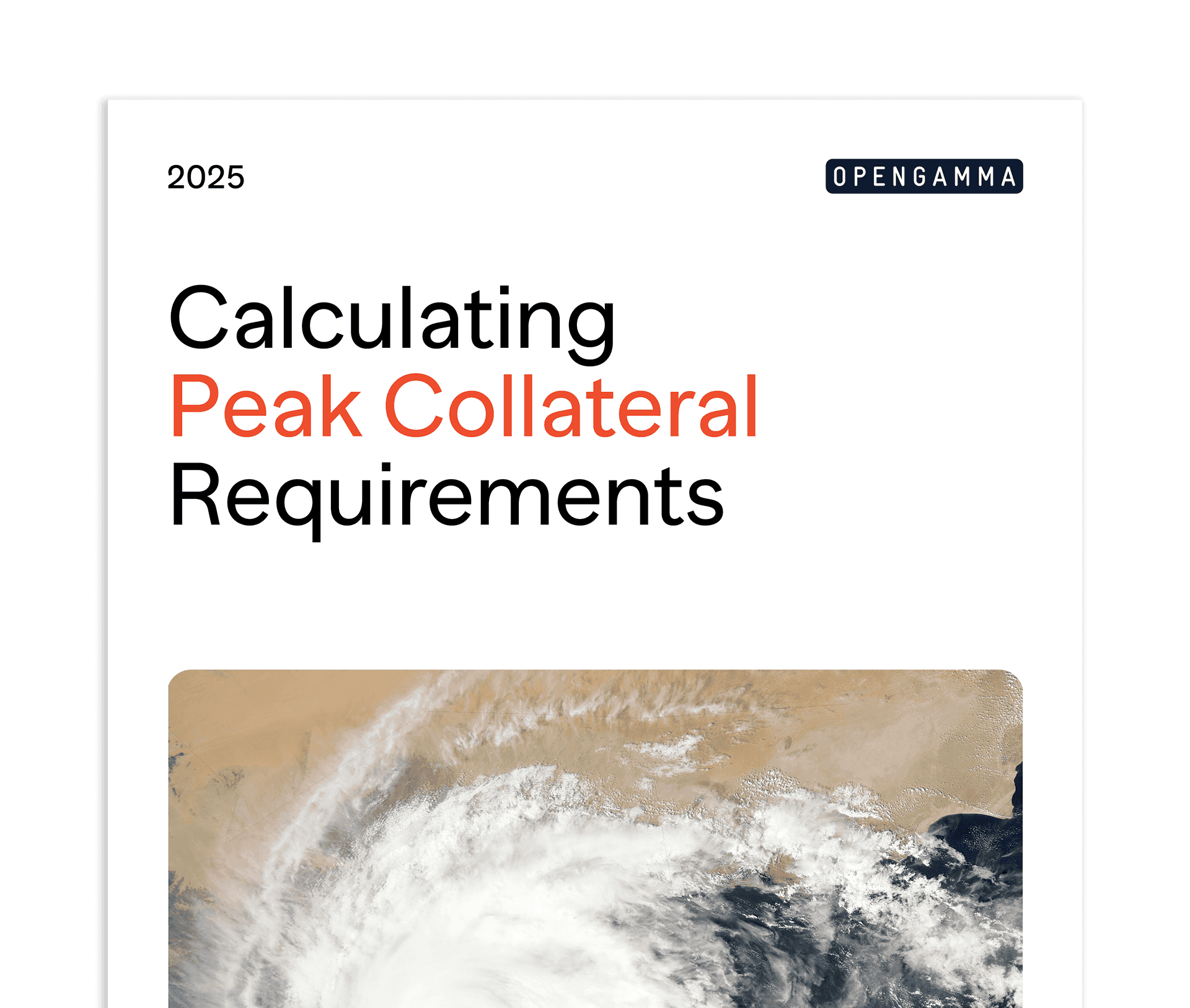How to Calculate Peak Collateral Requirements in US Power Markets
A technical overview of how Initial and Variation Margin requirements evolve under stress and why existing models often fall short.
Extreme weather is reshaping energy market risk
Recent years have seen an increase in weather-related disruptions across U.S. power markets. Polar vortexes, hurricanes, and grid vulnerabilities have caused sharp movements in spot and futures prices triggering significant collateral demands across trading portfolios.
This report examines how energy firms are approaching the challenge of modelling Peak Collateral Requirements, particularly under stress scenarios where liquidity can tighten quickly.
What’s covered in the report?
- The relationship between extreme weather, price volatility and margin stress
- Case studies from Storm Uri and Elliott showing real-world collateral impacts
- Why Variation Margin is easier to forecast than Initial Margin and what this means for risk models
- Limitations of standard VaR approaches for Initial Margin estimation
- Suggested improvements to forecasting methods using historical and stress scenarios
Contents
- Storm Timeline Analysis – Event-driven price moves and margin responses
- Margin Mechanisms – ERCOT-specific margin behaviour under stress
- Forecasting Challenges – Why path dependency and anti-procyclicality matter
- Modelling Techniques – Using VaR and SPAN to simulate future requirements
Authored by Our Margin Experts
The insights presented draw on direct experience modelling liquidity risk across U.S. energy markets during times of acute stress. All data examples are grounded in real trading scenarios and the approaches discussed reflect current industry practice.
Download the Report
Assess your exposure with a clearer view of how Initial and Variation Margin interact, especially when stress is systemic.
FAQs
What are Peak Collateral Requirements?
This refers to the maximum level of collateral, usually comprising both Initial and Variation Margin, that a firm may be required to post during periods of heightened market stress. Understanding the composition and drivers of these requirements is key to effective liquidity planning.
Why are collateral requirements particularly volatile in energy markets?
Energy markets are highly sensitive to extreme weather events, which can trigger large price movements in both physical and financial products. These fluctuations often lead to sharp changes in daily Variation Margin, and in some cases, re-calibrations of Initial Margin by clearing houses and brokers.
Is Value-at-Risk (VaR) sufficient for forecasting Peak Collateral?
VaR is commonly used to approximate Variation Margin exposure, particularly for exchange-traded derivatives. However, it is not a reliable proxy for Initial Margin, which is typically calculated using algorithms such as SPAN or filtered historical VaR with additional overlays. Firms relying solely on VaR are likely to under- or overestimate true liquidity needs.
Can these forecasts be integrated into existing ETRM or risk systems?
Many firms already use risk engines and ETRM platforms to simulate stressed scenarios and calculate VaR-based metrics. However, Initial Margin forecasting typically requires additional models or vendor solutions that account for clearing house methodologies and path-dependent factors.




